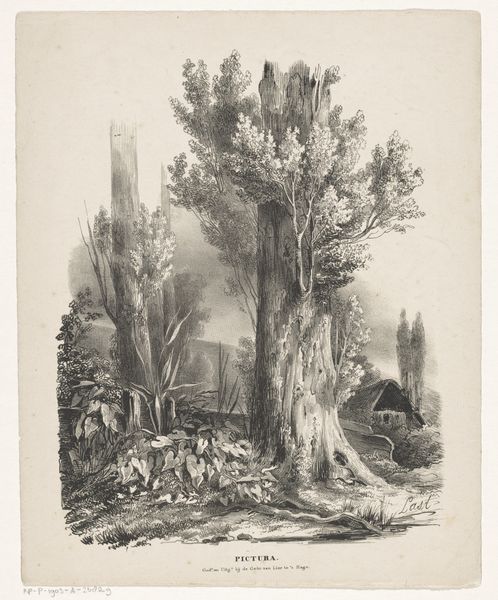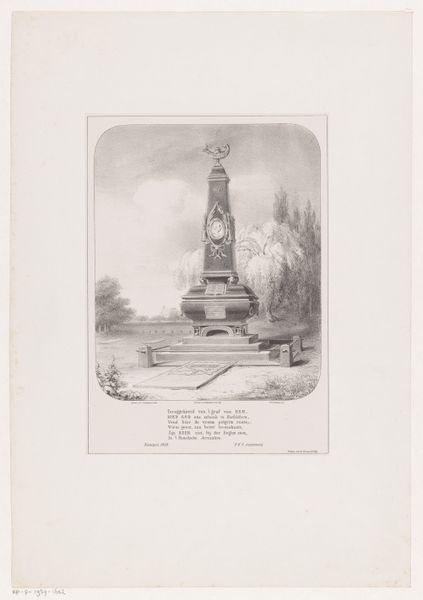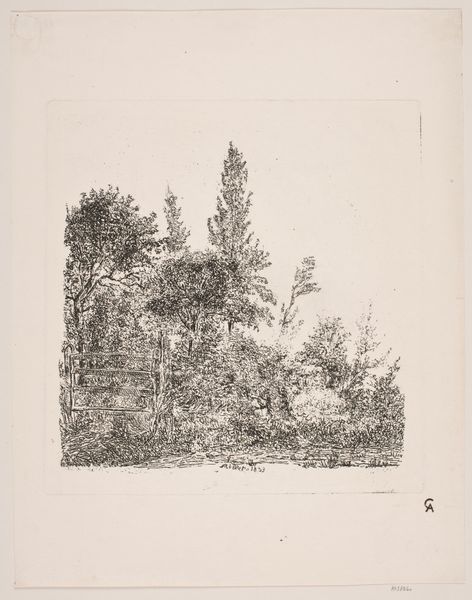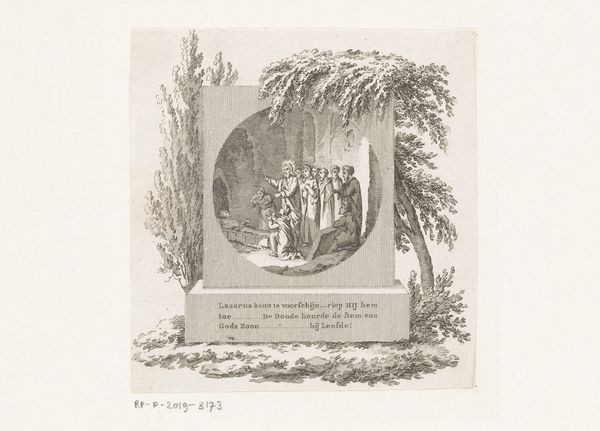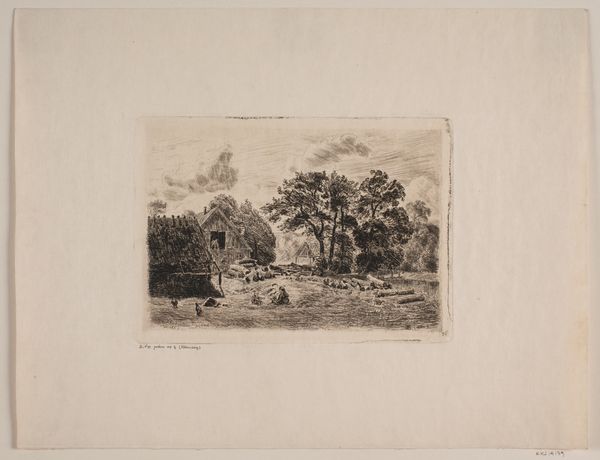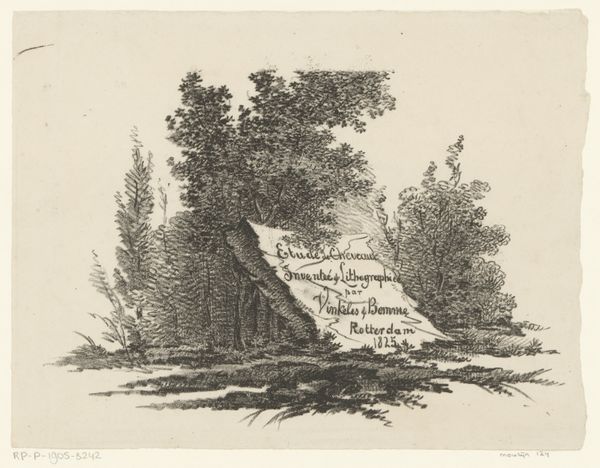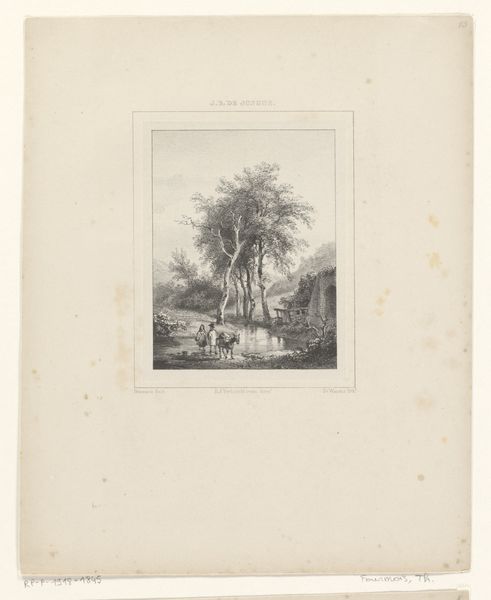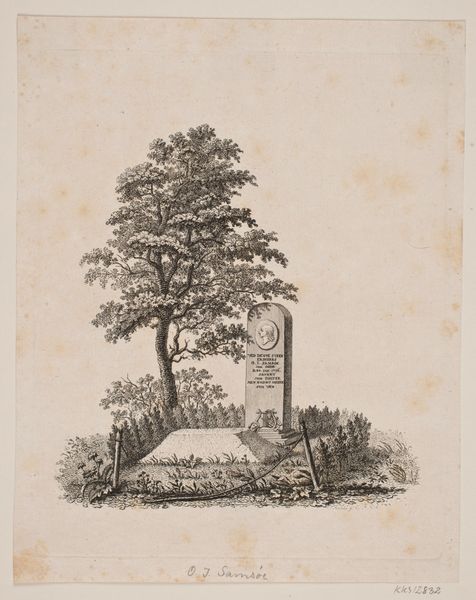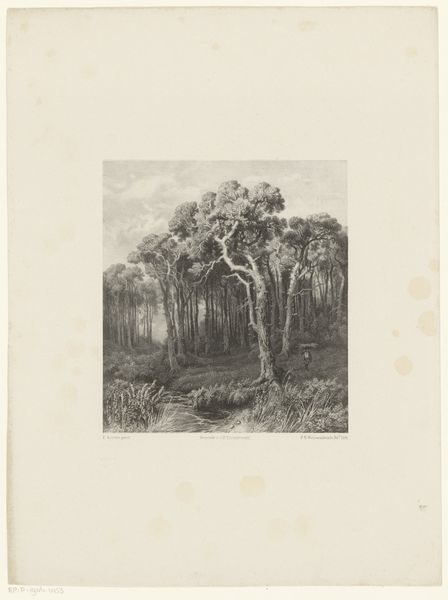
Dimensions: height 424 mm, width 342 mm
Copyright: Rijks Museum: Open Domain
Curator: This is a drawing titled "Graf van Johannes Bernardus van Bree" by Wilhelmus Joannes Walter, dating from 1857-1894. It's currently held in the Rijksmuseum collection. Editor: A rather somber piece. The weeping willow immediately strikes me, its fronds cascading downwards, mirroring the gravity of the subject. What materials did the artist employ? Curator: The work primarily uses ink and pencil, resulting in subtle tonal variations that render a delicate, almost ethereal quality. It exemplifies the romantic style, wouldn’t you agree? Editor: Indeed. Consider the textured applications of ink creating the shadows, or how the layering of pencil generates depth to enhance the monument and background features. Curator: I find it quite poignant how the artist utilizes the weeping willow to visually connect the earth and the headstone, as a solemn link of the corporeal and what lies beyond. Editor: Definitely. It looks to be crafted by hand. Is there any historical documentation about where the paper originated? That might give some insight into Dutch Romantic-era consumption. Curator: That could prove useful for determining Walter's intentions within the drawing. I will be sure to make note of that when reviewing materials from the period. Editor: The material's journey from plant fibers to a canvas reflects not only Walter's creative act, but also a confluence of global exchange that informs the cultural landscape of the time. Curator: A valuable angle of thought. Thank you for helping consider an approach to enrich further scholarly readings of the piece. Editor: Certainly, the piece's creation becomes more relevant as the layers of history enrich and illuminate its design.
Comments
No comments
Be the first to comment and join the conversation on the ultimate creative platform.
